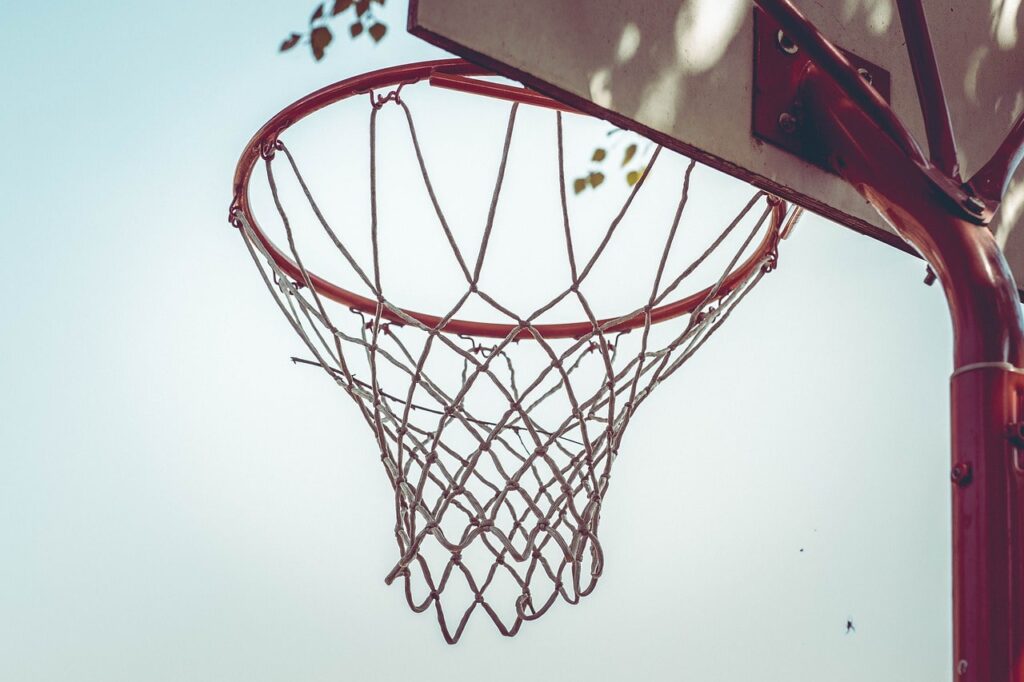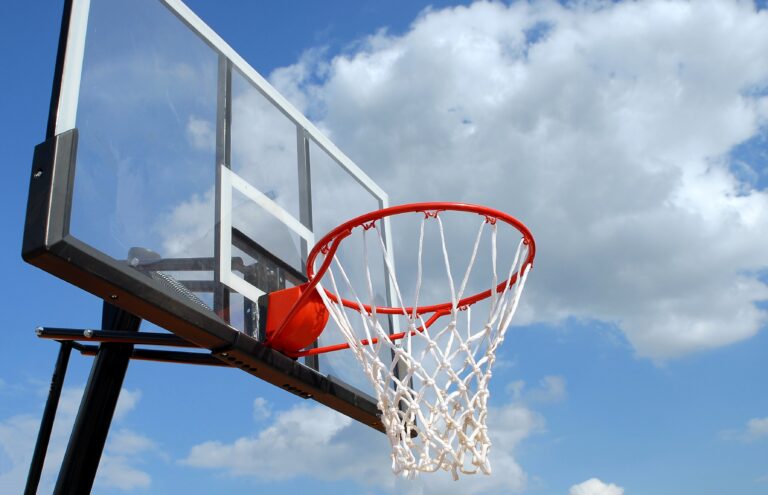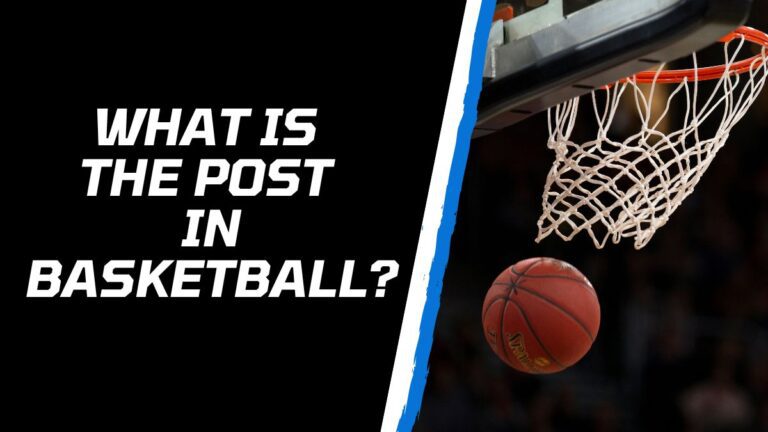What is Flopping in Basketball? All You Need to Know
Have you ever watched a basketball game and seen a player fall to the ground seemingly in agony after a slight touch from an opponent? If so, you’ve witnessed a flop. Flopping is a controversial tactic that some players use to gain an advantage in the game.
In this blog post, we’ll take a closer look at flopping in basketball. We’ll define what it is, discuss why players do it, and explore the consequences of flopping. We’ll also talk about the history of flopping in basketball, the debate over flopping, and what can be done to reduce it.
What is flopping in basketball?

Flopping in basketball is an intentional fall or stagger by a player after little or no physical contact with an opposing player. This is done in order to draw a personal foul call by an official against the opponent. The move is sometimes called acting, as in “acting like he was fouled”.
Flopping is generally considered unsportsmanlike because it is inherently designed to deceive the official. Additionally, flopping can slow down the pace of the game and make it less enjoyable for fans to watch.
Flopping can occur anywhere on the court, but it is most common in the following situations:
- When a player is driving to the basket and trying to draw a charging foul
- When a player is taking a jump shot and trying to draw a shooting foul
- When a player is defending a post player and trying to draw a blocking foul
Why do players flop?

There are a number of reasons why players flop in basketball. Some of the most common reasons include:
- To draw a foul: Flopping is one way that players can try to draw a foul on the opposing team. If the officials believe that the player has been fouled, they will award the player free throws and/or give their team possession of the ball.
- To gain an advantage: If a player is able to draw a foul on the opposing team, it can give their team a significant advantage. For example, if a player is fouled while shooting a three-pointer, they will get three free throws and their team will keep possession of the ball. This can be a huge advantage, especially in close games.
- To slow down the game: Flopping can also be used to slow down the game. This can be beneficial for teams that are trying to protect a lead or that are tired.
- To get out of trouble: Sometimes, players will flop in order to get out of trouble. For example, if a player is defending an opposing player who is driving to the basket, they may flop if they think they are going to be beaten. This can prevent the opposing player from scoring and can buy the defender some time to get back in position.
While flopping can give players an advantage, it is important to note that it is a controversial tactic. Many people believe that flopping is unsportsmanlike and that it damages the reputation of the game.
What are the consequences of flopping?

The consequences of flopping in basketball can vary depending on the level of play and the severity of the flop.
In the NBA, players can be fined for flopping. The first offense results in a warning and subsequent offenses result in fines that increase in $5,000 increments. After five offenses, a player may be suspended.
In high school and college basketball, players are not fined for flopping, but they may be charged with a technical foul. This can result in a free throw for the opposing team and a loss of possession for the player’s team.
For the NBA’s 2023-24 season, there’s a new in-game flopping penalty rule in place. Under the new rule, when a referee determines that a player has flopped, they will be assessed a technical foul, which will result in one free throw attempt for the opposing team. This is the first time that the NBA has had an in-game penalty for flopping.
In addition to the potential penalties, flopping can also have a number of other negative consequences. For example, it can:
- Damage the player’s reputation: Players who are known for flopping may be less likely to get calls from the officials, and they may also be criticized by fans and media members.
- Damage the team’s reputation: Teams with players who are known for flopping may be seen as unsportsmanlike or dishonest.
- Slow down the pace of the game and make it less enjoyable to watch for fans.
- Encourage other players to flop, which can create a culture of unsportsmanlike behavior in the sport.
Overall, the consequences of flopping in basketball can be significant, both for individual players and for teams. It is important for players to understand the risks involved before resorting to this type of behavior.
Different types of flops
There are many different types of flops in basketball, but some of the most common include:
- The fall: This is the most basic type of flop, where the player simply falls to the ground after making little or no contact with an opponent.
- The delayed fall: This type of flop is more difficult to detect, as the player may not fall to the ground immediately after contact. Instead, they may wait a second or two before falling, or they may even take a few steps before falling.
- The embellishment: This type of flop involves the player exaggerating the amount of contact that was made. For example, the player may grab their arm as if they have been fouled hard, even though the opponent only made slight contact.
- The jump: This type of flop involves the player jumping into the air and then falling to the ground. This is often done when a player is trying to draw a charging foul.
- The flop-and-roll: This type of flop involves the player falling to the ground and then rolling around in pain. This is often done when a player is trying to draw a shooting foul.
In addition to these basic types of flops, there are also a number of more creative flops that players have come up with over the years. For example, some players have been known to flop backward, forwards, or even sideways. Other players have been known to flop after being touched by a ref or even after tripping over their own feet.
While some flops may be more creative than others, they all have the same goal: to deceive the officials into calling a foul on the opposing team.
It is important to note that not all falls are flops. Sometimes, players are genuinely fouled and fall to the ground. However, if you see any of the signs of flopping listed above, it is a good indication that the player is flopping.
The history of flopping in basketball

Flopping has been around in basketball since the early days of the sport. However, it did not become a major problem until the 1980s and 1990s.
One of the reasons why flopping became more common during this time was the rise of television. As basketball games became more televised, players began to realize that they could gain an advantage by flopping and drawing fouls on their opponents.
Another reason for the increase in flopping was the influx of international players into the NBA. Players from Europe and South America were often known for their flopping, and they brought this style of play with them to the NBA.
Some of the most famous floppers in NBA history include:
- Vlade Divac
- Manu Ginobili
- James Harden
- Chris Paul
- LaMarcus Aldridge
These players were all known for their ability to draw fouls on their opponents, even when there was minimal contact.
In recent years, the NBA has taken steps to crack down on flopping. In 2008, the league began fining players for flopping. The fines start at $5,000 and increase for each subsequent offense.
Despite the fines, flopping remains a problem in the NBA. Some players believe that flopping is a necessary part of the game, while others believe that it is unsportsmanlike behavior.
The debate over flopping
The debate over flopping in basketball is a complex one. There are strong arguments on both sides of the issue.
On the one hand, flopping is unsportsmanlike behavior. It is an attempt to deceive the officials and to gain an unfair advantage over the opposing team. Flopping can also slow down the pace of the game and make it less enjoyable to watch for fans.
On the other hand, flopping is a legal part of the game. Players are allowed to try to draw fouls on their opponents, even if it means exaggerating the amount of contact that was made. Flopping can also be a legitimate strategy for players who are trying to win games.
Ultimately, the decision of whether or not to flop is up to the individual player. Some players believe that flopping is a necessary part of the game, while others believe that it is unsportsmanlike behavior.
Conclusion
Flopping is a controversial topic in basketball, with strong arguments on both sides. Some people believe that flopping is unsportsmanlike behavior that damages the reputation of the game, while others believe that it is a legitimate strategy that players should be allowed to use.
Fortunately, the NBA and other basketball organizations are working to crack down on flopping, and it is hoped that these efforts will help to reduce the amount of flopping in the game. In the meantime, fans can play a role in discouraging flopping by calling it out when they see it and by supporting players who play the game with integrity.







